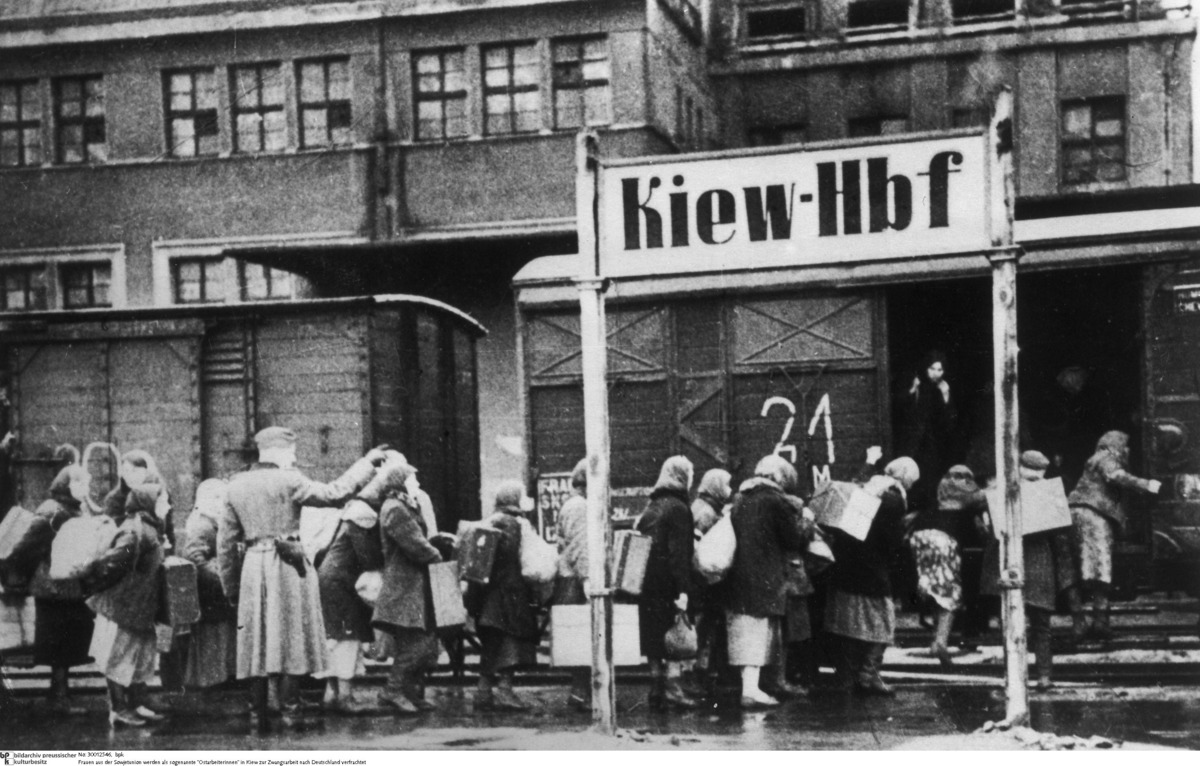Abstract
Although the demand for labor increased as the war continued, Hitler
and other Nazi leaders rejected labor conscription for women on the
grounds of ideology and Nazi population policy (they feared it would
affect women’s health and lead to a decline in birthrates). As a way
around this problem, the regime made greater use of forced labor carried
out by prisoners of war and civilians transported from the occupied
territories. On March 21, 1942, Fritz Sauckel, Gauleiter of Thuringia,
was appointed Plenipotentiary-General for Labor Mobilization and tasked
with centralizing and coordinating policies on forced laborers. Forced
laborers were subject to a racist hierarchy that determined their
treatment, e.g. their nourishment, accommodations, working conditions,
and punishment. Workers from Western Europe (France, Belgium, and
Holland) were accorded the best status, while Soviet laborers and
so-called Ostarbeiter (workers from
the East) received the worst treatment. Starting in the summer of 1943,
they were joined by the Italians, who were seen as traitors.
Concentration camp prisoners who were deployed as forced laborers were
below or outside of this hierarchy. Inadequate food supplies, illness,
corporal punishment, and executions were the norm, particularly for the
Ostarbeiter. According to official
figures, more than 7.61 million foreign laborers worked in Germany in
August 1944; 2.76 million came from the Soviet Union.
